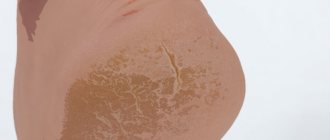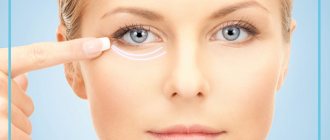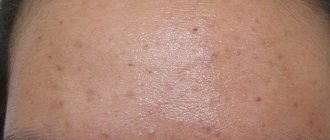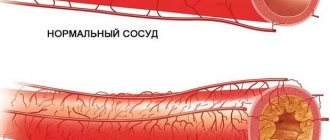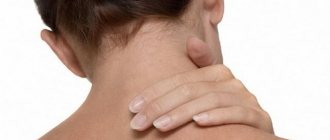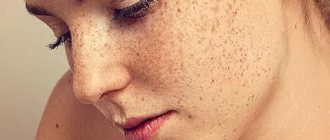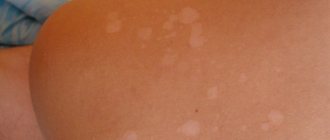Foot skin problems can be solved by a pedicurist or a qualified podiatrist. The skin is the largest and most vulnerable organ. Covers are constantly in contact with an aggressive environment and are exposed to mechanical and chemical influences. The body takes this into account and skin regeneration is one of the fastest processes.
We must help our body with proper care, nutrition, and hydration. Unfortunately, not everyone thinks about the importance of regular and competent care. The result is skin problems. Let's look at what problems there are and how to fix them.
Every day, feet are exposed to constant high loads. This is aggravated by the use of low-quality, incorrect and restrictive shoes and socks made of synthetic fabrics. As a result, foot skin pathologies occur in the majority of the population. An indifferent attitude towards cracked heels, dry and wet calluses, and regular peeling of the skin can lead to serious chronic diseases.
Many foot skin problems can be eliminated by a podiatrist. He will provide proper care, treatment of the skin, its hydration and nutrition, and give recommendations for prevention at home. If you do not use the services of a podiatrist in a timely manner, then in the future you will need the help of a surgeon - do not complicate the situation, take preventive measures in a timely manner.
Main skin problems on the feet
A podiatrist is regularly contacted with the following foot skin pathologies:
- calluses;
- cracks of different depths;
- dry skin;
- hyperhidrosis;
- corns;
- hyperkeratosis.
The specialist’s task is not only to identify the presence of pathology and select a method for eliminating it, but also to determine the causes of its occurrence - this will help carry out prevention and prevent the occurrence of pathologies in the future.
When to use
It is necessary to use cosmetics and medications against dry and cracked heels if the following symptoms are observed:
- Severe dry skin. With this type of dermis, the heels are more susceptible to the development of corns, cracks and infection.
- Thickening of the epidermis. Hyperkeratosis is most often accompanied by skin wounds.
- Pain in the feet when walking.
- Burning and severe itching.
- Unpleasant smell.
- Bleeding.
If you have one or more of the above signs, you should use anti-crack cream.
What are foot cracks?
Cracks in the epidermal layer appear on the outer skin and can extend deep into the dermis. Heels are a typical localization area.
Main causes of cracks
- leg injuries and mechanical damage;
- improperly performed pedicure;
- lack of regular skin care;
- dry skin;
- diseases of the digestive system;
- past fungal diseases;
- diabetes;
- taking antibiotics;
- psoriasis;
- dehydration of the body;
- strict diet without supervision by specialists;
- thyroid disease;
- hormonal changes, taking hormonal medications.
The appearance of cracks in the legs can be seasonal or chronic.
A pedicurist will be able to cope with cracks, but an integrated approach requires the help of an endocrinologist, dermatologist, gastoenterologist or immunologist. The master recommends specialists from whom you can get advice.
According to statistics, 70% of cracks are infected with fungi. It is recommended to visit a dermatologist, do tests and identify the type of fungus. This will help you choose a course of treatment for quick and safe skin recovery.
The specificity of fungal cracks is a green or brown tint. A pedicurist immediately sends a client with such a pathology to dermatologists. It is not possible to cure the infection yourself without determining the type of fungus at home. The help of a cosmetologist will not help either - removing the area without an integrated approach can lead to the spread of the disease.
Why are they formed?
Many people believe that only older people have cracks in their feet. Indeed, 25–30% of people over 40 have them. But they also occur in men, women younger than this age, and even in children.
The causes of cracks in the feet are a violation of the hydrolipid balance of the skin, a decrease in the production of collagen and elastin, and a decrease in the protective fat layer. Externally, this manifests itself in dryness, thickening, loss of elasticity, and firmness. Every day, the feet experience enormous pressure to support the body in a standing position, controlling balance when walking or running. With such a load, the skin inevitably stretches and expands. If it is dry and loses elasticity, then the likelihood of rupture when stretched under body weight will increase.
In addition to natural age-related changes, cracks in the skin of the feet are provoked by the following internal and external factors:
- wearing tight shoes;
- fungal infections, dermatitis;
- foot deformities, flat feet, heel spurs;
- poor hygiene, insufficient hydration or nutrition;
- skin contact with dry, hot air, salty sea or chlorinated pool water, ultraviolet rays;
- poor nutrition, leading to a deficiency of vitamins A, E, group B, and microelements important for skin health;
- endocrine disorders, including thyroid disease, diabetes;
- metabolic disorders;
- excess weight, which exposes the skin of the plantar part of the foot to excessive pressure and stretching;
- problems with blood circulation in the lower extremities, causing a lack of tissue nutrition;
- walking barefoot on hard surfaces (sand, stones, asphalt).
Cracks on the feet are a consequence of dry and thickened skin, or otherwise keratosis. Keratosis develops when keratinized or dead cells of the upper layer of skin do not have time to exfoliate and become layered on top of each other. In severe cases, the layer of thickened skin is 1–2 cm.
Treatment of cracks during pedicure
Hardware dry and combined pedicures work well with cracks. To eliminate pathologies, it is not recommended to carry out intensive softening by wetting. With deep tears, it is difficult to work with skin that has collected water.
Deep cracks are removed in 3-7 sessions. The procedure necessarily ends with treatment with nutritional compositions and healing agents. The client is given recommendations for care and, if necessary, demonstrated care procedures.
Main stages
treatment of cracks during combined pedicure:
- Treatment with antiseptic compounds.
- Treatment with keratolics, which contain enzymes and urea.
- The treated area is covered with a napkin for 5-10 minutes.
- Hardware processing with cutters of different hardness. Recommended tips are 100, 150 and 280 grit.
- Processing with a diamond cutter - the master forms a truncated cone in the direction of the crack. This helps open the crack and remove dry edges.
- Removing dust from feet using antiseptic compounds.
- Application of urea or wax based compounds that promote rapid healing.
During a pedicure, the area of skin affected by hyperkeratosis is usually removed.
At home, to increase the rate of acceleration, cracks are treated overnight with wax-based products. During the day, feet are regularly moisturized with nourishing creams. If wax-based products are not available, you can use Vaseline. To improve effectiveness, after treatment overnight, the cracks are covered with polyethylene and a cotton sock is put on.
Recipes for home care for feet and heels
Foot baths, compresses and peeling are easy to make yourself using natural ingredients. We are happy to share the most effective recipes.
Foot baths
- Milk-soap bath . Fill a container with warm water at a comfortable temperature no higher than 40 degrees. Add half a liter of milk and a tablespoon of soap crumbs. Take a bath for about 15-20 minutes until the water cools down.
- Bath against profuse sweating . Brew 2 tea bags for every liter of water, wait until the temperature of the “tea” becomes comfortable and dip your feet in the resulting decoction. Black tea has the ability to tighten pores and also contains tannins that reduce sweating.
- Soda bath for corns . Dissolve 2 tbsp in water. spoons of baking soda and 1 tbsp. a spoonful of soap or shower gel. Take a bath for 15-20 minutes. The shower gel in this recipe can be replaced with sea salt, and you can also add your favorite essential oils.
- Lemon bath . Lemon juice destroys the stratum corneum of the skin and works as an acid peel. Dilute lemon juice with water in a ratio of 1:10. Add the resulting mixture to warm water and soak your feet for 10 minutes. Afterwards, rinse your skin with water to avoid drying out.
Home peeling
- Coffee peeling . Ground coffee is one of the main exfoliating ingredients in natural cosmetics. It improves blood circulation and also stimulates the production of collagen and elastin for renewed and firm skin. Mix 1 tbsp. spoon of coffee, 1 tbsp. a spoonful of cocoa and the same amount of cinnamon. Add 150 ml of any oil (olive, grape seed, macadamia) and tbsp. a spoonful of Dead Sea salt. Apply to skin with massaging movements, rinse after 10 minutes. If desired, you can use ready-made coffee scrub “Coffee Cocktail”.
- Classic salt peeling . Mix 50 gr. Dead Sea salt or Himalayan salt with 1 tbsp. spoon of olive oil. Add 5 drops of tea tree or lavender essential oil. Massage the mixture onto your feet and leave for a few minutes. Afterwards, rinse with warm water and apply cream.
- Kefir peeling . Heat 100 ml of kefir to 39 degrees, pour into a bag and lower your feet there for 2 hours. Afterwards, rinse off the residue with water and you can start sanding.
- Citrus peeling . Fruit acids perfectly soften rough skin and saturate it with vitamins. Any citrus fruits that you can find in the kitchen are suitable for peeling: orange, grapefruit, lemon, lime, tangerine. Grind a fruit weighing about 200 grams in a blender instead of peel and seeds. Add a sprig of finely chopped mint. Apply the mixture to rough areas of the skin and leave for 10 minutes, then rinse with water. Repeat acid peeling every week. The Slim Citrus mixture is also suitable for citrus peeling.
Foot compress
- Honey compress for the night . Mix a tablespoon of honey with 2 tablespoons of flour. Form a dense cake from the resulting mass and apply it to the steamed legs, covering the top with film. It is advisable to leave the compress overnight.
- Moisturizing compress with aloe juice . Mix aloe juice with onion juice and olive oil in equal proportions. Apply the mixture to your feet, cover with foil and go to bed.
- Softening compress with vinegar and glycerin . Glycerin is loved by cosmetologists for its ability to quickly heal wounds, moisturize and soften the skin. Mix 2 tbsp. tablespoons of pharmaceutical glycerin with an equal amount of 9% apple cider vinegar. Apply the solution to gauze and apply to areas of rough skin. Leave for several hours or overnight, covering with film and warm socks.
- Onion compress for rough skin on heels . For the recipe you only need one medium onion. Cut it in half, apply it to your heels and secure it with film and leave it overnight, putting socks on top. In the morning, throw away the onion, wash and file your heels.
Mask for feet and heels
- Nourishing potato mask . Mash the warm boiled potatoes with a fork and apply the resulting puree in a thick layer to your feet. Cover with cling film for half an hour, then rinse with warm water and apply your favorite cream.
- Moisturizing oatmeal mask . You will need 2 tbsp. spoons of oatmeal, 2 tbsp. spoons of olive oil and a spoonful of honey. Mix the ingredients thoroughly and apply to your feet. Cover with cling film and rinse with warm water after half an hour.
- Softening mask with semolina . Mix 2 tbsp. spoons of sea salt, 1 tbsp. spoon of honey, 1 tbsp. a spoonful of sour cream and half a glass of semolina. Apply the resulting mixture to your feet for 20 minutes, then rinse with warm water.
- Cleansing mask with Dead Sea salt . Mix Dead Sea salt and olive oil in equal quantities, add a teaspoon of cinnamon. Apply to skin with massaging movements, rinse after 10 minutes.
Calluses: causes and methods of removal
A callus is formed by compaction of dead skin cells. They are distinguished by strictly defined and clearly visible boundaries, and can be dry or wet.
The main reasons for the formation of calluses:
- wearing uncomfortable and tight shoes;
- hard backs of shoes;
- wearing shoes without socks;
- irregular foot skin care;
- foot deformity;
- lack of care procedures.
Most calluses cause pain, discomfort, and are a source of infection.
Core calluses cannot be eliminated at home; a visit to a podiatrist is necessary. The pathology forms in the area of the fingers or foot and has a deep, pinpoint root canal. These calluses are often affected by fungus.
Effective elimination is only possible with an understanding of the cause of the formation. Dry calluses are removed by a pedicurist, who pre-soaks the skin and removes the growth with a nail file. Wet calluses require an exclusively individual approach.
Intoxication
Any poisoning or infection causes general poisoning of the body and failures in many systems. Even a common ARVI, not to mention a bacterial infection, is accompanied by general weakness. Sunstroke, harmful working conditions, stale food - everything can lead to weakness, and each reason needs to be dealt with. In many cases, long-term alcoholism is destructive to nerves and muscles.
CELT doctors, who have unique practical experience, will help to accurately determine the cause of the disease.
Make an appointment through the application or by calling +7 +7 We work every day:
- Monday—Friday: 8.00—20.00
- Saturday: 8.00–18.00
- Sunday is a day off
The nearest metro and MCC stations to the clinic:
- Highway of Enthusiasts or Perovo
- Partisan
- Enthusiast Highway
Driving directions
Corns: features and treatment
Corns resemble calluses, but are irregular in shape, large in size, have jagged edges, and are highly dense. The main means of combating corns is a combined pedicure. Cosmetologists use keratolic agents, which have a softening effect, and devices with attachments of varying degrees of abrasiveness.
The main causes of corns:
- low-quality, uncomfortable shoes;
- foot deformity;
- improper regeneration of the skin of the foot;
- dehydration and strict diets.
The regular appearance of corns, regardless of the shoes used, is a reason to visit an orthopedist.
The main stages of eliminating corns:
- visiting a pedicurist who will file the damaged area. The procedure is performed in several stages;
- daily home care;
- wearing shoes with orthopedic insoles;
- scheduled visit to a podiatrist.
With the help of a hardware pedicure, you can remove a small corn in one session. Large and dense ones are removed gradually, since if a significant area is removed in one procedure, the regeneration process is activated and the corns increase in size.
Final rating table for foot creams
| Cream | Quality points | Points for value | Points for popularity | Total points |
| Gehwol Extra | 7 | 1 | 3 | 11 |
| EVO with urea 10% | 6,5 | 4 | 1 | 11,5 |
| Camille 60 Hydro-Creme | 8 | 3 | 1 | 12 |
| "Doctor" with urea | 8 | 4 | 1 | 13 |
| Milv with menthol and camphor | 9 | 4 | 1 | 14 |
| Domix with antibacterial effect | 9,5 | 3 | 2 | 14,5 |
| Topicrem for corns and calluses UR-10 | 9 | 3 | 3 | 15 |
| SOFIPROFI “Sea wave” | 10,5 | 3 | 2 | 15,5 |
| Farmona Nivelazione | 12 | 1 | 3 | 16 |
| ARAVIA Professional Medi Heal Cream | 9,5 | 3 | 4 | 16,5 |
With the modern rhythm of life, it is very important not to forget about proper self-care, because this allows you to maintain health and youth. Creams are an important component of daily procedures, so it is necessary to choose the most effective product. We have compiled a rating of the best foot creams, which includes the most effective products: among them you can choose something for yourself. Share your impressions and experiences, leave comments - feedback and your wishes are very important to us, because this is the only way we can become even better and prepare the most relevant materials for you!
What is hyperhidrosis
Hyperhidrosis is increased sweating, which leads to the formation of skin pathologies. An area with constant high humidity and a temperature comfortable for the growth of bacteria is created in the foot area. This causes an unpleasant odor and peeling of the skin in large areas.
The main reasons for the development of hyperhidrosis:
- disorders of the thyroid gland;
- wearing uncomfortable shoes with poor ventilation;
- the use of low-quality creams based on synthetic bases that form an airtight film on the surface of the skin.
The main problem with hyperhidrosis is thick and swollen skin. It is difficult to process using hardware methods. To relieve the main symptoms, it is recommended to sprinkle the damaged areas with baby powder or talcum powder.
To treat hyperhidrosis, alcohol-based antiseptic formulations are used. The treatment can be done in a beauty salon. After hygienic treatment, the feet are wiped and treated with talcum powder. Prepared feet are processed using hardware methods using cutters with a hardness of 100-280 grit. After completing the procedure, the master will definitely give recommendations.
General recommendations:
- use a deodorant recommended by a specialist;
- wear shoes and clothes made from natural materials;
- take good care of your shoes;
- Perform regular foot hygiene procedures at least twice a day.
- Pay special attention to the condition of the insoles.
Simpler and no less dangerous factors affecting skin condition
Factors such as:
1. Lack of a balanced diet, which can negatively affect your appearance. The diet should include the use of fish and various vegetable oils (olive, corn, sunflower). Thanks to fatty acids, skin cells maintain a healthy appearance. The presence of vegetables and fruits containing vitamins A and E in the menu will give the skin velvety and elasticity. Carrots, pumpkin, nuts and all kinds of cereals will have a beneficial effect.
2. Neglect of expert advice on drinking plain water - up to two liters per day. Replacing plain water with tea and coffee will not give the desired result, but excessive consumption can lead to deterioration of skin color.
3. Passion for water aerobics and swimming in the pool does not have the most favorable effect. The already dry skin on the feet becomes excessively dry due to the addition of disinfectants to the water. Using an emollient cream will help avoid unpleasant consequences.
4. Sunbathers should remember that prolonged exposure to the scorching rays of the sun also causes significant harm to the legs. When the skin dries out, it becomes rough and flaky.
5. In addition to the load, the feet and especially the heels undergo changes for the worse due to the constant wearing of flip-flops, as a result of which the skin on the heels becomes rough and cracks.
6. Both tight tights and uncomfortable shoes can trigger the process. This factor may become a prerequisite for the development of varicose veins. In addition, synthetic leggings and tights can provoke allergic irritation, causing the skin on the legs to dry out and peel.
The lack of necessary physical activity, which leads to serious changes in the functioning of the vascular system, has a negative effect. Dry skin on the legs is caused by lack of physical activity: TV, computer, sedentary work.
Hyperkeratosis, dryness and flaking
Hyperkeratosis is a thickening of the stratum corneum. A layer of 1 to 10 mm is formed on the feet. The thickening is aggravated by the appearance of cracks, chronic formation of calluses and corns.
Excess weight, poor hygiene and the use of shoes made of synthetic materials are the main triggers of hyperkeratosis, among other reasons:
- genetic factor;
- age-related changes in the body;
- fungal infection;
- improper care of the skin of the feet;
- disturbances in the functioning of the endocrine system.
You can remove the effects of hyperkeratosis in a beauty salon. The pedicurist uses a combined technique, which includes the use of softeners and hardware treatment.
The maximum effect when removing rough skin is achieved when using cutters with an abrasiveness of 100-280 grit. The master gradually reduces the abrasiveness using different attachments.
Recommendations:
- using comfortable shoes;
- regular foot care with moisturizing creams;
- use of socks and shoes made from natural materials;
- regular visits to the podiatrist.
To combat dryness and flaking of the skin, urea-based products are used. The beauty parlors offer a procedure called cold paraffin therapy. A good effect is achieved by using wax applications and nourishing masks.
It is important not only to eliminate a cosmetic defect, but also to identify the causes of its occurrence and ensure proper prevention. If necessary, the podiatrist will give recommendations and refer you for consultations to specialized specialists to identify the cause of the defect.
How to Cleanse Rough Skin with Foot Baths
A relaxing foot bath with salt and oils is a complete spa treatment that you can do at home at any time. By following the instructions, you will soften rough skin, relieve fatigue and enjoy foot care.
First you need to fill a container with hot water at a comfortable temperature, about 37-39 degrees. Dissolve the bath mixture in it at the rate of 1 tablespoon for every liter of water. 15-20 minutes are enough to steam the skin. Don't keep your feet in the water for too long, otherwise the water will cool down and you will get the opposite effect.
After steaming, you can start working with a file, grater and pumice. There may be a lot of skin at first, don't let that worry you.
Finish the treatment with a relaxing foot massage. Stretch each foot separately, rubbing it from heel to toes and back. Rub and twist each finger. Press the edges of your foot several times. Apply precise pressure and rub your foot, moving through all areas from the heel to the toes. Massage the heel with circular movements and pinching. At the end, you can stroke it and twist your leg a little in the joint.
After such a massage, local blood circulation in the feet improves, fatigue and swelling go away, and the skin well absorbs all the beneficial substances from the oil or cream. At night, the body undergoes the most active regeneration, so we recommend performing the procedure before bed.
Avoid serious problems
A wide range of dermatoses develops in patients with diabetes mellitus. A number of pathologies are harbingers of this disease, others are a consequence. In total, up to 30 types of dermatoses with different clinical pictures are registered in diabetes mellitus.
All of the above diseases require professional and long-term treatment. It is recommended not to let your feet get into a condition that would require going to a hospital or clinic. It is necessary to regularly engage in the prevention of foot skin diseases. To do this you need:
- take care of your feet using products recommended by a cosmetologist;
- keep feet clean and dry;
- wipe the skin between the toes well after hygiene procedures;
- change socks twice a day, do not use synthetic shoes;
- wear only personal items.
People with chronic diseases are recommended to visit a podiatrist once every six months to receive professional care procedures.
Diagnostics
Clinical examination data, supported by the results of additional methods, help to understand what disease caused weakness in the legs. The list of diagnostic procedures is determined by a neurologist based on information obtained during a survey and neurological examination of the patient. The following tests may be performed:
- Blood tests.
In the hemogram, attention is paid to red blood counts, leukocyte count, and ESR. Biochemical analysis can detect hormonal or electrolyte imbalances, muscle enzymes, and specific antibodies. - Radiography.
The condition of the bone structures of the spine and skull can be assessed using conventional photographs taken in two projections. But the study has low resolution and does not detect changes in soft tissues. - Tomography.
CT is the preferred method for visualizing recent strokes, tumors, hematomas, and posterior fossa fractures. Diffuse pathology of the substance of the spinal cord and brain is more accurately determined by magnetic resonance imaging. - Myelography.
The patency of the cervical canal is determined by introducing a radiopaque contrast agent into the subarachnoid space. Myelography is indicated for intervertebral hernias, spinal injuries, and tumors. - Electroneuromyography.
Diseases accompanied by nerve conduction disorders are diagnosed using ENMG data. During the study, the peripheral nerve is stimulated with electrical impulses and the muscle response is subsequently recorded.
To identify vascular diseases, ultrasound angioscanning and rheovasography are prescribed. Endocrinopathies require ultrasound examination of the thyroid and parathyroid glands, adrenal glands; in persons with myasthenia gravis, the size of the thymus is assessed. Diagnosis of hereditary diseases is carried out using cytogenetic and molecular genetic tests.
Foot massage
